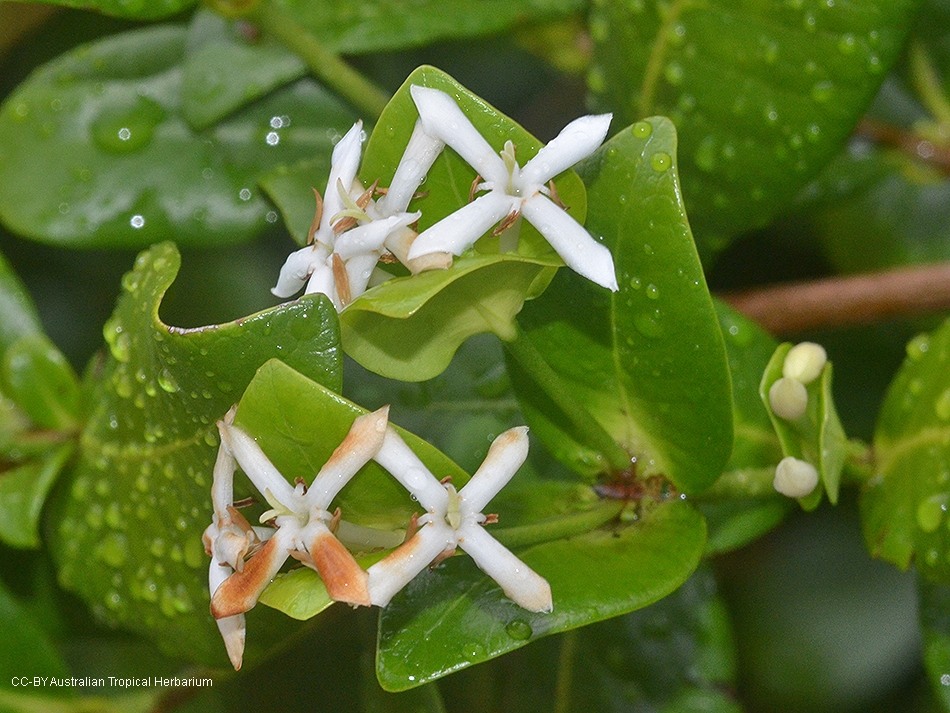Australian Tropical Rainforest Plants - Online edition
Ixora queenslandica Fosberg.


Fosberg, F.R. (1938), Two Queensland Ixoras. Journal of Botany, British and Foreign 76: 234;pro parte replaced synonym: Ixora triflora R.Br. ex Benth. nom. illeg.
Shrub or small tree to 4 m. Branchlets glabrous, brown grey to light brown, blotched.
Leaves simple, opposite. Stipules 2, interpetiolar, 3-5 mm long, broad at the base but tapering to a fine point at the apex, stipules sheathing dense colletors between inner surface of stipule and node. Petiole short, 2-7 mm long, ± reddish. Leaf blade elliptic or obovate (or occasionally suborbicular), 4.7-12 cm long, 2.5-6 cm wide, base obtuse or cuneate, margin entire, apex obtuse, acute or acuminate. Leaves glabrous. Lateral veins 14-20 pair, forming loops inside the blade margin. Domatia absent.
Inflorescence simple or compound, terminal on short axillary branchlets; inflorescence unit 1-3 flowered cyme. Inflorescences pedunculate 6-35 mm long, flowers, sessile to subsessile. Flower clusters subtended by a pair of leafy bracts, 1-3 cm long, 0.7-2 cm wide. Flowers bisexual, 4 merous, actinomorphic. Calyx tubular, 2.5 mm long, with 4 indistinct lobes, <. 0.2 mm long. Corolla tubular with 4 spreading lobes, tube about 4-17 mm long, lobes 4.5-10 mm long. Stamens 4, attached to corolla at the base of the corolla lobes, filaments short 1-1.5 mm long, anthers about 2.5-5 mm long, anthers exserted from corolla tube at anthesis. Style and stigma about 19 mm long, stigma 2-lobed. Ovary inferior.
Features not available.
Occurs in CEQ, southwards to central coastal Queensland near Bundaberg. Grows in coastal and subcoastral dry and littoral rainforest communities. Altitudinal range 0-20 m.
This profile information and associated coding has been adapted from Cooper & Cooper (2004), Harden et al. (2014) and Reynolds & Forster (2006).





